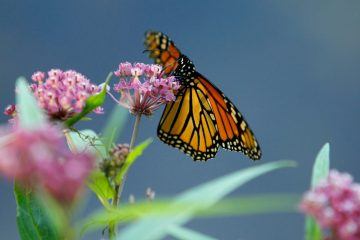Carl Zimmer in The New York Times:
 The caterpillar of the monarch butterfly eats only milkweed, a poisonous plant that should kill it. The caterpillars thrive on the plant, even storing its toxins in their bodies as a defense against hungry birds. For decades, scientists have marveled at this adaptation. On Thursday, a team of researchers announced they had pinpointed the key evolutionary steps that led to it. Only three genetic mutations were necessary to turn the butterflies from vulnerable to resistant, the researchers reported in the journal Nature. They were able to introduce these mutations into fruit flies, and suddenly they were able to eat milkweed, too. Biologists hailed it as a tour-de-force that harnessed gene-editing technology to unscramble a series of mutations evolving in some species and then test them in yet another.
The caterpillar of the monarch butterfly eats only milkweed, a poisonous plant that should kill it. The caterpillars thrive on the plant, even storing its toxins in their bodies as a defense against hungry birds. For decades, scientists have marveled at this adaptation. On Thursday, a team of researchers announced they had pinpointed the key evolutionary steps that led to it. Only three genetic mutations were necessary to turn the butterflies from vulnerable to resistant, the researchers reported in the journal Nature. They were able to introduce these mutations into fruit flies, and suddenly they were able to eat milkweed, too. Biologists hailed it as a tour-de-force that harnessed gene-editing technology to unscramble a series of mutations evolving in some species and then test them in yet another.
“The gold standard is to directly test mutations in the organism,” said Joseph W. Thornton, an evolutionary biologist at the University of Chicago. The new study “finally elevates our standards.” Insects began dining on plants over 400 million years ago, spurring the evolution of many botanical defenses, including harsh chemicals. Certain plants, including milkweed, make particularly nasty toxins known as cardiac glycosides. The right dose can stop a beating heart or disrupt the nervous system. For thousands of years, African hunters have put these poisons on the tips of arrows. Agatha Christie wrote a murder mystery featuring foxglove, which produces cardiac glycosides.
More here.
